 您当前的位置:首页 > Speakers > SC14: Biophotonics and Optofluidics
您当前的位置:首页 > Speakers > SC14: Biophotonics and Optofluidics
SC14: Biophotonics and Optofluidics
来源:彭一茱 发布时间:2019-04-02 13:49
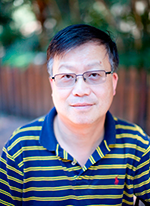 |
 |
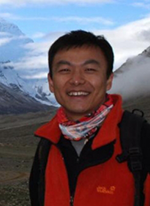 |
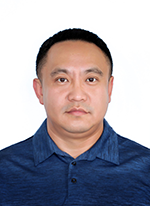 |
| Zhongping Chen University of California, Irvine, USA |
Quli Fan Nanjing University of Posts & Telecommunications, China |
Jun Ding Stanford University, USA |
Wenfei Dong Suzhou Institute of Biomedical Engineering and Technology, CAS, China |
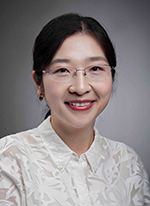 |
 |
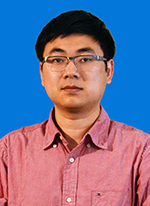 |
 |
| Ling Fu Huazhong University of Science and Technology, China |
Ho-Pui HO Chinese University of Hong Kong, Hong Kong, China |
Minbiao Ji Fudan University, China |
Donghyun Kim Yonsei University, South Korea |
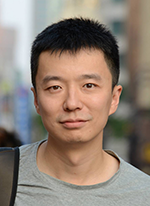 |
 |
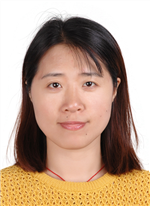 |
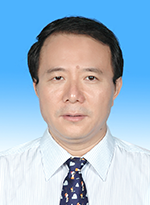 |
| Ming Lei Xi'an Institute of Optics and Precision Mechanics, CAS & Xi'an Jiaotong University, China |
Chengbo Liu Shenzhen Institutes of Advanced Technology, CAS, China |
Liwei Liu Shenzhen University, China |
Junle Qu Shenzhen University, China |
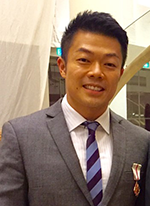 |
 |
 |
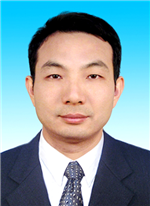 |
| Timothy Tan Nanyang Technological University, Singapore |
Chao Tian University of Science and Technology of China, China |
Tymish Y. Ohulchanskyy Shenzhen University, China |
Xunbin Wei Shanghai Jiao Tong University, China |
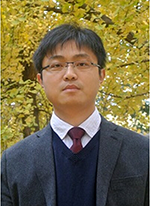 |
 |
 |
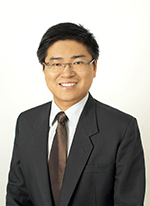 |
| Lei Xi Southern University of Science and Technology, China |
Sihua Yang South China Normal University, China |
Zhen Yuan University of Macau, Macao, China |
Han Zhang Shenzhen University, China |
 |
 |
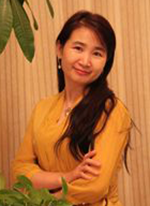 |
|
| Yan Zhang Huazhong University of Science and Technology, China |
Yong Zhang National University of Singapore, Singapore |
Dan Zhu Huazhong University of Science and Technology, China |
Advances in integrated multimodality intravascular imaging for assessing and characterizing atherosclerotic plaques (Tutorial)
Zhongping Chen
University of California, Irvine, USA & Nanchang Hangkong University, China

Abstract
Atherosclerosis is one of the major causes of morbidity and mortality. This presentation reports on the development of integrated multiple modality intravascular imaging techniques for the identification and evaluation of vulnerable plaques. The integrated imaging technology combines the high-resolution capabilities of optical coherence tomography (OCT), deep penetration depth of intravascular ultrasound (IVUS), molecular sensitivity of fluorescence and photoacoustic (PA) imaging, and mechanical contrast of phase-resolved acoustic radiation force optical coherence elastography (ARF-OCE) to characterize plaques. In vitro images of pathologic human coronary arteries, as well as in vivo images of normal rabbit abdominal aorta, were obtained using the integrated probe, which demonstrated the feasibility of the integrated system in intravascular imaging and its potential in the detection of vulnerable atherosclerotic plaques. The presentation will discuss advances made thus far, as well as the challenges that remain to translate this technology from the bench to clinical bedside.
Biography
Dr. Zhongping Chen is a Professor of Biomedical Engineering and Director of the OCT Laboratory at the University of California, Irvine. He is a Co-founder and Chairman of OCT Medical Imaging Inc. Dr. Chen received his B.S. degree in Applied Physics from Shanghai Jiao Tong University in 1982, his M. S. degree in Electrical Engineering in 1987, and his Ph.D. degree in Applied Physics from Cornell University in 1993.
Dr. Chen's research group has pioneered the development of functional optical coherence tomography (OCT), including Doppler OCT, phase resolved OCT, and optical coherence elastography. He has published more than 280 peer-reviewed papers and review articles and holds a number of patents in the fields of biomaterials, biosensors, and biomedical imaging.
Dr. Chen is a Fellow of the American Institute of Medical and Biological Engineering (AIMBE), a Fellow of SPIE, and a Fellow of the Optical Society of America.
Dr. Chen's research group has pioneered the development of functional optical coherence tomography (OCT), including Doppler OCT, phase resolved OCT, and optical coherence elastography. He has published more than 280 peer-reviewed papers and review articles and holds a number of patents in the fields of biomaterials, biosensors, and biomedical imaging.
Dr. Chen is a Fellow of the American Institute of Medical and Biological Engineering (AIMBE), a Fellow of SPIE, and a Fellow of the Optical Society of America.
Near-Infrared organic semiconducting optical platform for theranostic application (Tutorial)
Quli Fan
Nanjing University of Posts & Telecommunications, China

Abstract
Near-infrared (650-1700 nm) optical platform with spatiotenporal control, minimal invasiveness, deep tissue penetration and fine spatial resolution is a promising tool for precise understanding and theranostic of diseases.
We synthesized many near-infrared absorption/fluorescence materials with excellently optoelectronic and biochemical performance, and polish them into smart and biocompatible optics based-theranostic probes for advanced molecular imaging and enhanced therapy. Including three major research interests.
Nonlinear optical platform: Developing nonlinear optical absorption materials with simple structure yet unprecedentedly high two-photon absorption cross-section used to detect pathological-parameter and implement target-specific-activitable photodynamic therapy.
Photoacoustic imaging platform: We developed endogenic and biodegradable organic materials as nano-photoacoustic probes with strong near-infrared absorption and good biocompatibility for brain tumor and pathological-parameter imaging, monitoring thrombolysis and photothermal therapy.
NIR-II (1000-1700 nm) fluorescence imaging platform: To solve the lack of target-specific NIR-II fluorescence probes, a generic activitable probe design strategy using bio-erasable intermolecular donor-acceptor interaction was firstly developed to provide guidelines to design activatable NIR-II fluorescence probe for target-specific imaging. Furthermore, the concept of multi-pathological-parameter cooperatively activatable NIR-II fluorescence probe was proposed, implementing ultra-high target-specific imaging.
Our works offer many opportunities to construct near-infrared optical platform for precise theranostic.
We synthesized many near-infrared absorption/fluorescence materials with excellently optoelectronic and biochemical performance, and polish them into smart and biocompatible optics based-theranostic probes for advanced molecular imaging and enhanced therapy. Including three major research interests.
Nonlinear optical platform: Developing nonlinear optical absorption materials with simple structure yet unprecedentedly high two-photon absorption cross-section used to detect pathological-parameter and implement target-specific-activitable photodynamic therapy.
Photoacoustic imaging platform: We developed endogenic and biodegradable organic materials as nano-photoacoustic probes with strong near-infrared absorption and good biocompatibility for brain tumor and pathological-parameter imaging, monitoring thrombolysis and photothermal therapy.
NIR-II (1000-1700 nm) fluorescence imaging platform: To solve the lack of target-specific NIR-II fluorescence probes, a generic activitable probe design strategy using bio-erasable intermolecular donor-acceptor interaction was firstly developed to provide guidelines to design activatable NIR-II fluorescence probe for target-specific imaging. Furthermore, the concept of multi-pathological-parameter cooperatively activatable NIR-II fluorescence probe was proposed, implementing ultra-high target-specific imaging.
Our works offer many opportunities to construct near-infrared optical platform for precise theranostic.
Biography
Dr. Fan obtained his Ph.D. degree from National University of Singapore (NUS) in 2003. He joined the Institute of Advanced Materials at Fudan University in 2003. In 2006, he moved to Nanjing University of Posts & Telecommunications and then was promoted to full professor in 2007. From 2012 to 2014, he came to Stanford University as a visiting scholar to explore the potential applications of organic semiconducting materials in theranostics. Currently, his research interests mainly focused on the development of organic semiconducting materials for theranostic applications including photoacoustic imaging, photodynamic therapy, and photothermal therapy. To date, Dr. Fan has published more than 120 journal papers with citation over 4000 and H-index of 46.
High speed two-photon Bessel light-sheet microscope for neural imaging
Jun Ding
Stanford University, USA

Abstract
Studying neural activities in brain requires rapid volumetric imaging in deep tissue. Conventional two-photon microscopy has a decent penetration depth in the scattered brain tissue, but its sequential point-scanning method limits the imaging volume and speed. We developed a multi-modality two-photon Bessel light sheet microscope that enables large field of view light-sheet imaging and high-speed 3D projection imaging for neural activities. The microscope uses a Bessel beam to illumination a 250-μm-wdie field of view. It has two distinct imaging mode: the light-sheet scanning mode and the projection mode. The light-sheet scanning mode enables sub-micron 3D imaging over the entire field of view. Structured illumination could be combined to reject the scattered emission and enhance image clarity on fine neural structure in deep brain tissue layers. The projection mode uses the two-photon Bessel beam to scan across tissue at up to 100 volumes per second. It captures dual-view projection images with two objectives oriented at 90-degree angle. Neural activities are imaged in two orthogonal projections simultaneously and analyzed in 3D at the millisecond timescale.
Biography
Dr. Jun Ding obtained his B.S. degree from Department of Biology, East China Normal University in 1998, and Ph.D. degree in Neuroscience from Northwestern University in 2002. After his postdoctoral training at Harvard Medical School, he joined faculty at Department of Neurosurgery, Stanford University School of Medicine in 2012. The Ding laboratory studies the neural mechanisms of movement control. The Ding lab uses a multidisciplinary approach, including combined physiology and 2-photon imaging, to study neural circuits ex vivo and in vivo.
Multifunctional mesoporous silica nanocarriers
Wenfei Dong
Suzhou Institute of Biomedical Engineering and Technology, CAS, China

Abstract
Owing to large surface area, high pore volume, tunable pore size, abundant surface chemistry, and acceptable biocompatibility, mesoporous silica nanoparticles (MSNs) are considered as promising candidates for cancer diagnosis and therapy. However, the clinical translation and commercialization of MSNs is still a long way because of their lower therapeutic efficacy. In this talk, I will update the recent progress on MSN-based nanocarrier systems in my group. Firstly, we had developed novel biodegradable MSNs in response to the tumor microenvironment, which can solve their problem of severe side effects and lower efficacy of delivery of biomolecules in tumor therapy. Secondly, we had developed the novel cell membrane-cloaked MSNs for targeted and safe tumor therapy. Thirdly, we had fabricated Janus metal- MSNs as novel multifunctional platform with the integration of targeted, efficient, and safe cancer theranostics, solved the drawback of considerable interference of each part in traditional core-shell MSNs. In the end, we hope the above achievements can be utilized for accelerating the clinical translation of MSNs.
Biography
Prof. Dr. rer. nat. Wen-Fei Dong received his master degree in 1999 from Changchun Institute of Applied Chemistry, Chinese Academy of Sciences, Jilin, China and his Ph.D. degree in 2004 from Department of interfaces, Max-Planck-Institute of Colloids and Interfaces, Golm, Potsdam, Germany. His Ph.D. thesis supervisor is Prof. Dr. Helmuth Möhwald. From 2006 to 2008, he joined a group of Prof. Kataoka Kazunori in University of Tokyo as a JSPS postdoctoral fellow. From 2009 to 2012, he moved to Key Laboratory on Integrated Optoelectronics, College of Electronic Science and Engineering, Jilin University as an Associate Professor. After 2013, he is appointed as the professor in Suzhou Institute of Biomedical Engineering and Technology, Chinese Academy of Sciences. His recent research projects especially focus on the development of novel nanoprobes, multifunctional nanocarriers and next-generation biomedical devices for liquid biopsy. He has co-authored over 110 publications including reviewing articles and book chapters.
Deep brain Calcium recording in behaving mice
Ling Fu
Huazhong University of Science and Technology, China

Abstract
Neuronal calcium transients are reflection of neuronal action potential firing. The microscopy should be able to catch the dynamic process of calcium signal transients with a good temporal and spatial resolution for deep brain. Here, we developed a multi-channel fiber photometry system for recording neural activities in several brain areas of an animal or in different animals. With this system, we simultaneously acquired calcium signals from the bilateral barrel cortices of a head-restrained mouse or from the orbitofrontal cortices of three freely moving mice. Results about visual cue-dependent memory circuit for place navigation in hippocampus of mice will be also presented. In addition, a GRIN lens based confocal microscope is also developed to detect the specific cell type calcium signal of deep brain area with single cell resolution. The activity signals of neurons have been efficiently recorded in orbitofrontal cortices, hippocampus, and striatum nucleus in head-fixed mice. In sum, relaying the deep brain calcium signals to the surface with optical fibers is an efficient approach to extend the in vivo optical detection methods. The methods we developed are suitable for neural circuitry investigations, and finally facilitate the finding of new treatments of psychiatric diseases.
Biography
Dr. Ling Fu is a professor in Britton Chance Center for Biomedical Photonics in Wuhan National Laboratory for Optoelectronics (WNLO), and the Executive Dean for School of Engineering Sciences in Huazhong University of Science and Technology (HUST) in China.
Her research interest is optical microscopy and its applications to biomedicine. Nonlinear optical microscopy based on multiphoton absorption and higher harmonic generation has provided spectacular sights into visualization of cellular events within live tissue. Her group aims to develop real-time nonlinear optical imaging approaches to monitor how molecules work and cells interact in their natural environment. Her research focuses on the multicolor multiphoton microscopy for in vivo immunology, and confocal/multiphoton microendoscopy for neuron imaging.
Dr. Ling Fu serves as an assistant editor in Journal of Innovative Optical Health Sciences, and an editorial board member for Scientific Reports, Chinese Optical Letters, Neurophotonics. She was an International Council member of Optical Society of America (OSA), one of program chairs for 100th Annual Meeting of OSA. She is a senior member of Chinese Optical Society.
Her research interest is optical microscopy and its applications to biomedicine. Nonlinear optical microscopy based on multiphoton absorption and higher harmonic generation has provided spectacular sights into visualization of cellular events within live tissue. Her group aims to develop real-time nonlinear optical imaging approaches to monitor how molecules work and cells interact in their natural environment. Her research focuses on the multicolor multiphoton microscopy for in vivo immunology, and confocal/multiphoton microendoscopy for neuron imaging.
Dr. Ling Fu serves as an assistant editor in Journal of Innovative Optical Health Sciences, and an editorial board member for Scientific Reports, Chinese Optical Letters, Neurophotonics. She was an International Council member of Optical Society of America (OSA), one of program chairs for 100th Annual Meeting of OSA. She is a senior member of Chinese Optical Society.
Nucleic acid based bioassays with active centrifugal microfluidics
Ho-Pui HO
Department of Biomedical Engineering, The Chinese University of Hong Kong, Hong Kong SAR, China

Abstract
The next generation of healthcare infrastructure is destined to be highly personalised, which relies on accurate analysis of health-related medical data. Rapid low-cost point-of-care bio-detection devices therefore have a significant role for data collection. The lab-on-a-chip (LoC) approach, which brings together the benefits of miniaturisation due to microfluidics and integrated smart electronics for bioassay applications, is certainly the direction to go for. In this presentation, we report the use of centrifugal force the realisation of LoC. We have developed a so-called lab-on-a-disc (LOAD) system, capable of conducting sample-to-answer bioassays at point-of-care level. Centrifugal forces generated by spinning a sample disc have been conveniently used for the actuation of multiple fluidic samples and reagents in a highly parallel and controllable manner. We have developed a wireless power coupling scheme for driving the active devices in the disc platform. Real-time data transfer is achieved with the use of a wireless communication port. This active LOAD device is capable of performing a series of sample processing steps, including transfer of samples and reagents between microchambers, cell lysis, temperature cycling for DNA amplification and detection through monitoring of fluorescence. As demonstration experiments, we report successful screening of drug allergy genetic markers from blood samples and detection of infectious diseases.
Biography
Ho-Pui HO (Aaron) received his BEng and PhD in Electrical and Electronic Engineering from the University of Nottingham. Currently a professor in the Department of Biomedical Engineering, The Chinese University of Hong Kong. Started as a compound semiconductor materials scientist, his current academic interests focus on nano-sized semiconductor materials for photonic and sensor applications, optical instrumentation, surface plasmon resonance biosensors, lab-on-a-chip and biophotonics. He has published over 300 peer-reviewed articles, 32 Chinese and 6 US patents. He is a Fellow of SPIE.
Deep-learning assisted stimulated Raman histology
Minbiao Ji
Fudan University, China

Abstract
Stimulated Raman scattering (SRS) microscopy is an emerging label-free imaging technique. It is a nonlinear version of Raman scattering, with the advantages of high chemical selectivity and rapid imaging. We developed dual-phase parallel imaging technique for real-time two color SRS imaging, which provides a key advance for intraoperative virtual histology. We further extend our study to image various human diseases, including pancreatic, laryngeal and brain cancers. Furthermore, we have developed a deep-learning based algorithm to classify lesion and non-lesion tissues, which could aid rapid, intraoperative diagnosis.
Biography
Dr. Minbiao Ji received B.S. degree in Physics from the Peking University, Beijing, in 2001. He received his Ph.D degree in Physics at Stanford University, in 2011. His research was focused on using ultrafast laser spectroscopy to study various chemical dynamics, including hydrogen-bond dynamics in water, and transient dynamics of carriers and enzyme molecules. Afterwards, he joined the research group of Prof. Sunney Xie at Harvard University as a postdoctoral research fellow, where he learnt the technique of coherent Raman scattering microscopy and applied it to various biomedical researches. Minbiao Ji is currently a Professor in the Department of Physics in Fudan University, Shanghai, where he won the “Thousand Youth Talent Plan” in 2015. His current research is focused on developing novel nonlinear optical spectroscopy and microscopy tools to study biomedical and material sciences.
Multiscale molecular dynamics using plasmonic nanoaperture arrays
Donghyun Kim
Yonsei University, Korea

Abstract
Optical molecular imaging and sensing techniques based on light localization are explored. The creation of locally amplified electromagnetic near-fields on surface plasmon-enhanced metallic nanoarray structures has been investigated in many studies because of the potential for extreme light confinement to improve molecular detection sensitivity and resolving power for imaging processes that would be typically impossible to observe under the diffraction limit. By colocalization of light-matter distribution using plasmonic nanoaperture arrays, it was shown that improvement of detection sensitivity by several orders of magnitude would be plausible. For imaging, although many emerging microscopy approaches have been highly successful to produce super-resolved images beyond imagination, we explore alternative techniques based on plasmonic nanoarrays by which achievable resolution may be customized to fit specific imaging needs. Feasibility studies on multiscale dynamics of molecular complexes such as internalization of virus particles, sliding microtubules, intracellular mitochondrial movement, and bacterial motility on random and periodic plasmonic nanoaperture patterns performed. Enhancement of axial resolution for the detection of intracellular protein distribution is reported by extraordinary light transmission using linearly graded plasmonic nanoapertures. To be also described here is switching-based light localization to circumvent the diffraction limit of far-field optics under the Rayleigh criterion, thereby implement full-field super-resolution microscopy. Localization switching can also be used to improve image resolution of label-free surface plasmon microscopy which suffers from plasmon scattering in a conventional set-up. Improvement of surface coverage of localized fields is discussed using random nanocomposite islands for light switching.
Biography
Dr. Donghyun Kim received B. S. with summa cum laude and M. S. from Seoul National University both in electronics engineering. He graduated from Massachusetts Institute Technology in 2001 with Ph. D. in electrical engineering in the area of novel multi-dimensional display technologies and smart optical filters. He worked on next generation fiber-optic access communication systems at Corning Inc. as a senior research scientist and then investigated cellular biophotonic sensors for in vitro cell culture devices at Cornell University, Ithaca, NY, as a postdoctoral fellow. Since 2004, He has been leading Biophotonics Engineering Laboratory of Yonsei University, Seoul, Korea. The main theme of his research has been focused on nanophotonic technology and applications in biomedical engineering based on plasmonic techniques. He has published more than 100 peer-reviewed journal and conference papers on nano/biophotonics, many of which were the results of collaboration with researchers of diverse backgrounds across the world and also holds 30 international patents. In recognition of the research achievements, He was awarded a Korean Research Foundation Young Investigator Award in 2005 and LG Scholar Fellowship in 2009. He has organized many local and international conferences in the field of nano/biophotonics including Asian and Pacific Rim Symposium on Biophotonics, Surface Plasmon Photonics 2011, and SPIE Global Congress on Nanosystems in Engineering and Medicine 2012.
Full-color structured illumination optical sectioning microscopy
Ming Lei
Xi'an Institute of Optics and Precision Mechanics, CAS & Xi'an Jiaotong University, China

Abstract
High resolution volumetric imaging technology has found a number of applications in many biological fields. However, the existing volumetric imaging tools are often time-consuming to use on large-scale specimens, such as centimeter-sized insects. In addition, most volumetric imaging systems discard the natural color information of the specimens. To surmount these limitations, we present a structured illumination-based approach capable of delivering a large field-of-view three-dimensional images. With this approach, full-color volumetric images and 3D morphological data in size range of typical insect samples can be obtained. This method provides a very promising approach that can be used to support many different types of entomological investigations.
Biography
Dr. Ming Lei is now working as a full professor in Xi'an Jiaotong University and Xi'an Institute of Optics and Precision Mechanics, Chinese Academy of Sciences. He was trained as a postdoctoral research fellow in the Dept. of Chemistry, University of Konstanz (2008-2010). He received his Ph. D. degree in Xi'an Institute of Optics and Precision Mechanics, Chinese Academy of Sciences in 2007. He received B. E. degree in School of Physics and Optoelectronic Engineering, XiDian University in 2000. His current research focused on super-resolution microscopy and optical trapping technologies. He has published more than 100 research papers and holds 12 patents.
Extracting molecular and vascular information with multi-scale photoacoustic imaging
Chengbo Liu
Shenzhen Institutes of Advanced Technology, CAS, China

Abstract
The diseased or disordered state of biological system often manifests as the vascular or molecular abnormity. This talk will focus on the vascular and molecular information acquisition based on multi-scale photoacoustic imaging technology including both photoacoustic microscopy (PAM) and computed tomography (PACT). Besides the application studies, the talk will also cover research progress on technology and instrumentation development in photoacoustic imaging. In specific, in PACT, a novel principle named wavefront fast marching was applied to improve the resolution, and a new optical and acoustic coupling method was developed to improve the sensitivity. In PAM, novel multi-scale and multi-modality imaging designs were proposed to achieve mighty information acquisition in different regimes, and a new motion correction method was developed to conquer the motion artifacts by heart beat and breathing. Based on the above technology innovations, the sensitivity, resolution, and speed of photoacoustic imaging have been improved. The technology innovations were further applied to image tumor boundary, monitor tumor metastasis, and diagnose vascular plaques, as well as applied to brain imaging and study of tumor theranostic mechanisms.
Biography
Chengbo Liu received both his Ph.D and Bachelor degree from Xi'an Jiaotong University, each in 2012 in Biophysics and 2007 in Biomedical Engineering. Now he is an associate professor at Shenzhen Institutes of Advanced Technology, Chinese Academy of Sciences, working on multi-scale photoacoustic imaging technology, instrumentation and translational research. He has published more than 50 journal papers, and applied for more than 30 patents. He is currently a member of SPIE, OSA and IEEE, and serves as routine reviewer for more than 20 journals such as Laser & Photonics Review, Nano Letters, IEEE TMI.
Tumor microenvironment monitoring based on optical methods
Liwei Liu
Shenzhen University, China

Abstract
Label-free non-invasive optical imaging method have made tremendous inroads toward elucidating pathways in tumor microenvironment. However, their wide application is hindered by the limited discrimination in the sub-millimeter field of view and the lack of uniform pathological criteria. In this work, we introduce different contrastive optical method such as nonlinear optical, fluorescence lifetime imaging microscope (FLIM) to offer cellular-scale observation for primary and metastatic tumors as a reference for the tumor therapy and tumor pathology. our study will offer the potential to translate this method into routine clinical use.
Biography
Liwei Liu received BSc, MSc and Ph.D. degrees from Changchun University of Science and Technology, now she is a full professor in Shenzhen University, she has award National Science Foundation for Distinguished Young Scholars in 2017. She has published over 60 scientific papers in peer-reviewed journals, her research interests cover mainly optics, nanophotonic and biophotonic, and biological sensors.
Biomedical photonics: from imaging to theranostic applications
Junle Qu
Shenzhen University, China

Abstract
Biomedical photonics, which involves a fusion of photonics and biomedicine, deals with interaction between light and biological matter. The use of photonics for optical diagnostics, as well as for light-activated and light-guided therapy, has an increasing impact on health care in recent years. The challenges for future development of optical diagnostics and therapy include limited penetration depth, diffraction limited spatial resolution for optical imaging, as well as the complicated mechanism of light-tissue interaction on a broad range of length scale. In addition, the use of light for therapy and treatment, e.g, in photodynamic therapy (PDT), is limited by the penetration and is increasingly dependent on combining different imaging modalities with light-activated therapies, in particular drug-free light treatment. In this talk, I will first present our recent work on biomedical optical imaging, including multimodal, NIR & Short wave IR, as well as superresolution optical imaging. Then, I will discuss the ideas to expand the scope of conventional PDT by using nonlinear photon upconversion of the NIR light and demonstrate how the nonlinear interactions of NIR light can open a new avenue for transformational advances in PDT. I will also show that direct irradiation of cells with low level NIR light can cause reactive oxygen species (ROS) generation, changes in lipid metabolism and lipid droplet formation, membrane depolarization and Ca2+ influx. These can all result in cancer cell apoptosis and death, providing basis for development of drug-free PDT of type I. In the future, the theranostic approach can be developed combining type I and type II PDT pathways and involving nonlinear optical imaging.
Biography
Junle Qu graduated from the Department of Electronic Engineering, Xi'an Jiaotong University with a BE degree in 1992. He graduated from Xi'an Institute of Optics and Precision Mechanics, Chinese Academy of Sciences with a Ph.D. degree in 1998. From 2001 to 2003, he was working as a postdoctoral fellow in the School of Optometry at Indiana University in USA. Since 2003, he has been working in the Institute of Optoelectronics and the College of Optoelectronic Engineering, Shenzhen University. He is currently a Professor of Optical Engineering at Shenzhen University. His research interests include nonlinear optical microscopy, fluorescence lifetime imaging, superresolution optical imaging and their applications in biomedicine, imaging guided optical therapy. He has published more than 200 papers in peer reviewed journals such as Nature Photonics, Nature Communications, Chemical Society Reviews, Advanced Materials, Chem, Optics Letters etc. He is the Fellow of SPIE and the director of Biomedical Photonics Committee of Chinese Optical Society. He serves in the editorial boards of JIOHS, Frontiers of Optoelectronics etc.
Turning the tide on upconversion cross-relaxation via energy transition engineering
Timothy Tan
School of Chemical and Biomedical Engineering, Nanyang Technological University, Singapore

Abstract
Cross-relaxation in lanthanide nanoparticles has always been deemed deleterious in upconversion emissions, especially so for lanthanide ions with multiple energy states. Such ions, when placed within close proximity, encourage cross relaxation energy transfer leading to loss in upconversion quantum yield. In this talk, I will show that cross-relaxation may not always be undesirable in upconversion processes. First of all, I will share some of our understanding of cross-relaxation processes, and through this understanding, we turn the tide around and exploit cross-relaxation for tuning single upconversion emission. We also learn ways to overcome its deleterious effects through a nanostructuring technique and achieve 808 nm near-infrared activated photodynamic therapy. Finally, I will showcase putting cross-relaxation into good use in one of the highest photothermal efficiency attained in tumor photothermal therapy with simultaneously photoacoustic imaging, and a potentially disruptive technology for skin phototherapy.
Biography
Dr Timothy Tan obtained his Ph.D in Chemical Engineering from the University of New South Wales, Australia. He is interested in the engineering, manipulation and interrogation of nano-biophotonic systems, with an ultimate goal of enhancing biological and chemical functions. His group has developed novel upconversion nanotheranostics suitable for photodynamic and photothermal theray, photoacoustic imaging and skin photomedicine, with potential application in eczema and carcinoma phototherapy. His group has also patented an electrostatic tunable hydrogel delivery platform which has demonstrated effective siRNA delivery, cell internalization and gene knockdown for scar reduction in rabbit eye models post glaucoma filtration surgery.
Dr Tan has published more than 95 peer-reviewed papers and obtained/applied for 8 patents. His work has garnered more 5000 citations with a H-index of 43. His recent awards include Singapore President's Public Administration Award 2015 and Young Investigator Award in “International Symposium of Materials on Regenerative Medicine 2012”.
Dr Tan has published more than 95 peer-reviewed papers and obtained/applied for 8 patents. His work has garnered more 5000 citations with a H-index of 43. His recent awards include Singapore President's Public Administration Award 2015 and Young Investigator Award in “International Symposium of Materials on Regenerative Medicine 2012”.
Biomedical photoacoustic tomography and microscopy: from technology to applications
Chao Tian
University of Science and Technology of China, China

Abstract
Based on the energy conversion of light into sound, photoacoustic imaging is an emerging noninvasive biomedical imaging technique and has experienced explosive developments in the past two decades. As a hybrid imaging technique, photoacoustic imaging possesses distinguished optical absorption contrast as in optical imaging and superb spatial resolution as in ultrasound imaging. It can visualize biological samples at scales from organelles, cells, tissues, organs to small-animal whole body and has found unique applications in a range of biomedical fields. In this talk, I will present our most recent progress in photoacoustic imaging, including photoacoustic tomography and photoacoustic microscopy. In photoacoustic tomography, I will present our efforts in the development of a high-performance, real-time photoacoustic scanner and its applications in the sentinel lymph node identification in vivo. Results reveal that the detector view angle, element number, center frequency, bandwidth, aperture size, focusing, orientation error, and scan step angle error all have significant impacts on the imaging performance of the scanner. The developed scanner can be used in practical scenarios and produce real-time high-performance imaging. In photoacoustic microscopy, I will report our work in single cell and single vessel imaging. Results show that optical-resolution photoacoustic microscopy can not only achieve high-resolution, high-sensitivity single cell imaging but also can visualize blood vessels architecture of the retina and choroid in living rabbits without any labeling. The work advances both the technology and applications of photoacoustic imaging in biomedicine.
Biography
Dr. Chao Tian received the B.S. degree in Electrical Engineering and the Ph.D. degree in Optical Engineering from Zhejiang University, Hangzhou, China. He then worked as a Post-Doctoral Research Fellow in biomedical photoacoustic imaging with the Department of Biomedical Engineering at the University of Michigan, Ann Arbor. He has authored over 30 peer-reviewed journal articles and six inventions, and is the awardees of the "One Hundred Talents Program" by the Chinese Academy of Science (CAS) and Anhui Province, China. Dr. Tian is currently a professor at the School of Engineering Science, University of Science and Technology of China (USTC). His research interests mainly focus on photoacoustic imaging and its biomedical applications.
Near infrared emitting nanoformulations for optical bioimaging and imaging guided drug delivery
Tymish Y. Ohulchanskyy
Shenzhen University, China

Abstract
Due to the ability of near-infrared (NIR) light to penetrate deeper into biological tissues, NIR luminescence imaging is emerging as a powerful yet feasible biomedical imaging technique, allowing for imaging guided surgery, therapy and drug delivery Over the last several years, we have been developing nanomaterials as NIR emitting probes for bioimaging. A nanochemistry approach allows us to combine imaging and therapeutic agents and fabricate nanoparticles as targeted, imaging guided drug delivery nanovehicles. Light excitation plays a key role in the functionality of these photoactive nanoplatforms, which can be tuned and optimized through control of the excitation dynamics and electronic processes within nanoparticles. The talk will provide examples of the nanoformulations, where electronic processes have been orchestrated by us to enhance imaging and therapeutic functionalities. The developed nanostructures include liposomal and polymeric nanoparticles, near-infrared fluorescent organic dyes, rare-ion doped nanophosphors, as well as their hybrids.
While possessing the optical imaging contrast functionality, the NIR emitting nanoplatforms can be also garnished with other medical imaging modalities, enabling the integration of cellular, tissue and whole body imaging and allowing us to employ a single nanoformulation for multiple imaging techniques. The talk will demonstrate examples of applications of nanoparticles as multimodal imaging guided therapeutic agents and conclude with a discussion on the challenges and opportunities in the field.
While possessing the optical imaging contrast functionality, the NIR emitting nanoplatforms can be also garnished with other medical imaging modalities, enabling the integration of cellular, tissue and whole body imaging and allowing us to employ a single nanoformulation for multiple imaging techniques. The talk will demonstrate examples of applications of nanoparticles as multimodal imaging guided therapeutic agents and conclude with a discussion on the challenges and opportunities in the field.
Biography
Tymish Y. Ohulchanskyy holds his B.S./M.S. (Physics) and Ph.D. (Optics and Laser Physics) degrees from Taras Shevchenko National University of Kyiv (Kyiv, Ukraine). After obtaining Ph.D. in 2001, Dr. Ohulchanskyy has joined the University at Buffalo (UB, Buffalo, NY, USA) where he advanced to the position of Deputy Director at the UB's Institute for Lasers, Photonics and Biophotonics. Since 2016, Dr. Ohulchanskyy occupies the Distinguished Professor position in the College of Physics and Optoelectronic Engineering of Shenzhen University, Shenzhen, Guangdong, China. Prof. Ohulchanskyy's main research interest is in biophotonics, with focus on nanoformulations for optical/multimodal bioimaging and photoinduced therapy; he is also interested in physical mechanisms of phototherapy. He has published more than 130 articles in peer-reviewed journals (>12000 citations, h-index of 48, according to Google Scholar) and has a number of patents and patent applications. Prof. Ohulchanskyy is a member of SPIE and American Chemical Society (ACS), he serves on editorial boards of several journals.
Noninvasive monitoring of nanoparticle clearance and aggregation in blood circulation by in vivo flow cytometry
Xunbin Wei
Shanghai Jiao Tong University, China

Abstract
Nanoparticles have been widely used in biomedical research as drug carriers or imaging agents for living animals. Blood circulation is crucial for the delivery of nanoparticles, which enter the bloodstream through injection, inhalation, or dermal exposure. However, the clearance kinetics of nanoparticles in blood circulation has been poorly studied, mainly because of the limitations of conventional detection methods, such as insufficient blood sample volumes or low spatial-temporal resolution. In this work, we monitored the dynamics of nanoparticle concentration and formation of nanoparticle aggregates in the bloodstream in live animals using in vivo flow cytometry. The results indicated that nanoparticles in smaller size could stay longer in the bloodstream. PEG-modification could prolong circulating time and reduce the formation of aggregates in the blood circulation. Our work shows that IVFC can be a powerful tool for pharmacokinetic studies of nanoparticles and other drug carriers, assessing cell-targeting efficiency, as well as potentially measuring cardiac output and hepatic function in vivo.
Biography
Prof. Wei obtained his BS in Physics from University of Science and Technology of China in 1993. He received his Ph.D. in Biophysics from University of California at Irvine in 1999. He had been a Postdoc fellow at Harvard Medical School, and a faculty member at Wellman Center for Photomedicine, MGH. Dr. Wei was a professor at Department of Chemistry in Fudan University from 2006 to 2010. He joined Shanghai Jiao Tong University (SJTU) in 2011 and currently is the head of the Optical Molecular Imaging Laboratory and distinguished professor in School of Biomedical Engineering. Prof. Wei has authored and co-authored more than 80 papers in peer reviewed scientific journals, including Nature, PNAS, and Nature Communications. Dr. Wei received the National Outstanding Young Scientific Investigator Award in 2014. Currently he is an SPIE Fellow and Associate Editor of Cytometry Part A (IF=3.71). His research interests include early detection of cancer and treatment of Alzheimer's disease by optical methods.
Multiscale photoacoustic microscopy
Lei Xi
Southern University of Science and Technology, China

Abstract
Photoacoustic microscopy (PAM), benefiting from rich optical contrast, scalable acoustic resolution and deep penetration depth, is of great importance for the fields of biology and medicine. The introduction of new scanning devices/mechanisms and fast pulsed lasers enables high spatiotemporal resolution and compact configuration. However, limited by the size and performance of reported optical/acoustic scanners, existing PAMs are bulky, heavy, and suffer from low imaging quality/speed. In this talk, I will present a multiscale photoacoustic microscopic platform consisting of large-field-of-view PAM, portable PAM, handheld PAM and endoscopic PAM, which are capable of meeting various requirements of both fundamental and clinical studies..
Biography
Lei Xi received his bachelor degree from Huazhong University of Science and Technology, Wuhan, China (2007) in optics, and finished his doctoral and post-doctoral training in the Department of Biomedical Engineering at the University of Florida, Gainesville, USA, in 2012 and 2014, respectively. Then, he worked at the University of Electronic Science and Technology of China (UESTC) from 2014 to 2018 as a professor. Now, he join the Department of Biomedical Engineering at the Southern University of Science and Technology (SUSTech). He is hosting the multifunctional optical imaging lab (www.mfoil.org) in SUSTech and focusing on developing novel optical imaging techniques for different biomedical and clinical studies.
Photoacoustic imaging technology and clinical translation
Sihua Yang
South China Normal University. China

Abstract
This talk presented the new progress in photoacoustic imaging towards the clinical translation. A toward clinically-used photoacoustic dermoscope (PAD) assembled by a multiscale confocal opto-sono objective, was developed for label-free imaging anatomy of human skin with endogenous chromophores. The newly-developed opto-sono objective can effectively coordinate the spatial resolution and penetration depth in the visualization of the skin delamination and chromophore structures up to reticular dermis depth, with lateral resolution from 1.5 μm to 104 μm and axial resolution from 34 μm to 57 μm. The PAD allows us to achieve multilayered skin histology implicated in the diagnosis or staging of pigmentary and vascular skin diseases, which is a promising technique for non-invasive observation of human tissue structure and skin disease detection.
Biography
Sihua Yang received his doctoral degree in Optics in 2009 at South China Normal University. Now he is Professor, the Vice Dean of College of Biophotonics, Institute of Life Science, South China Normal University. He has published more than 80 peer-reviewed journal papers, including Journal of the American College of Cardiology, Small, Biomaterials, Optics Letter, Optics Express, Appl Phys Lett and so on. He got the" Sylvia Sorkin Greenfield Award" of American Association of Physicists in Medicine (AAPM) in 2008, and the Natural Science Award of Guangdong Province in 2008 and 2013. His main interests in research include Photoacoustic microscopy imaging and clinical applications, multi-modality imaging of photoacoustics, ultrasound and fluorescence, ultrashort microwave-induced thermoacoustic imaging.
Optical mapping of brain activation and connectivity: from cognition, psychiatric disorders to neurological disorders
Zhen Yuan
University of Macau, Macau, China

Abstract
To date, the neural mechanism underlying brain cognition and various psychiatric and neurological disorders remains yet unclear and is still under extensive investigations. One aim of our present work is to use optical neuroimaging techniques to identify the brain activation patterns and networks associated with various cognition functions such as the deception, language and translation, executive functions, emotion, intelligence and mathematics. In addition, we will also discuss our recent attempts at using fNIRS brain imaging in various clinical applications such as in drug/food/ gambling addiction and down syndrome. Our pilot fNIRS neuroimaging results exhibit that both the altered brain networks and hemodynamic/neural changes in the cortex are able to reveal the complex neural mechanism associated with brain cognition and diseases.
Biography
Dr. Yuan is an associate professor with the Faculty of Health Sciences at University of Macau (UM). Right now, he is also serving as the acting Dean of the Center for Cognition and Brain Sciences at UM. Before joined UM, he had worked as an assistant professor with the Arizona State University and research assistant professor in Biomedical Engineering Dept. with the University of Florida. His academic investigations focus on cutting-edge research and development in laser, ultrasound and EEG/fMRI-related biomedical technologies as well as their clinical/pre-clinical applications in neuroimaging and neurosciences, and molecular imaging and cancer. He has achieved national and international recognition through more than 150 SCI publications in high ranked journals in his field. He is the editorial board member of Quantitative Imaging in Medicine and Surgery, associate editor of BMC Medical Imaging, and associate editor of Frontiers in Human Neuroscience. He is a senior member of OSA and senior member of SPIE.
Emerging two-dimensional monoelemental materials (Xenes) for Biophotoincs applications
Han Zhang
Shenzhen University, China

Abstract
Emergence of novel two-dimensional (2D) monoelemental materials (Xenes) has shown remarkable potential for technological applications, as well as a plethora of unexplored fundamental science. Xenes (e.g., borophene, silicene, germanene, stanene, phosphorene, arsenene, antimonene, bismuthene, and tellurene) are of particular interest, as they are the most chemically tractable material for synthetic exploration. The excellent physical, chemical, electronic and optical properties regard Xenes as promising agents for biosensors, bio-imaging, therapeutics delivery, theranostics, as well as other new bio-applications. In this talk, we first discuss the general properties of Xenes and provide the summary and classification of Xenes according to their bulk properties. The synthesis and modification methods of Xenes are then presented. Furthermore, the representative Xenes nanoplatforms for various Biophotonics applications are elaborated. We also propose the optimization approaches for performance improvement of Xenes for Biophotonics applications. Finally, the research progress, challenges and perspectives for future development of Xenes in Biophotonics are discussed.
Biography
Prof. Han Zhang was born in Wuhan, China, in 1984. He received his BS degree from Wuhan University in 2006 and PhD from Nanyang Technological University in 2010. He is currently a director of the Shenzhen Key Laboratory of 2D Materials and Devices, and the Shenzhen Engineering Laboratory of Phosphorene and Optoelectronics, Shenzhen University. To date, he has published over 203 scientific publications and 38 patents. His current research focus is the ultrafast and nonlinear photonics of two-dimensional materials. His publications have received >20000 citations, with an H-index of 70. He was also selected as the highly cited researcher by Clarivate Analytics at 2018 and has been awarded/enrolled with ‘the Second Prize of Natural Science Award, Ministry of Education (Rank the second)' and ‘China's Top 10 Optical Breakthroughs', ‘NSFC Key Project' and ‘NSFC outstanding young scholar fund' etc.
Near Infrared-Optogenetic Manipulation of the C. elegans Motor Circuit by Upconversion Nanoparticles
Yan Zhang
Huazhong University of Science and Technology, China

Abstract
Optogenetics become a powerful tool to decode the circuit mechanisms that underlie the physiological and pathological states of the brain. A technical limitation for optogenetics is the lack of optical transparency of most living tissues. All currently developed genetic light sensors are activated by visible light, whose tissue penetration is limited due to tissues' high light absorption and scattering. Near infrared light (NIR) pentrates tissue deeply, but its application to motor behavior stimlation has been limited by the lack of known gentic NIR light responsive sensors. We designed and synthesized lanthanide doped upconversion nanoparticles (UCNPs) that effectively convert 808 nm NIR ligth to visible light eissions and they are compatible with light-active proteins; as such, it can be used in optogenetic manipulation of the motor behavior in C.elegans. The UCNPs effectively activates Chrimosn-expressing, inhibitory GABAergic motor neurons, leading to reudced action potential firing in the body wall muscle and resulting in locomotion inhibition. The UCNPs also activates the excitatory DVC interneuron, leading to potentiated muscle action potential bursts and active reversal location. Importantly, UCNPs exhibit negligible toxicity in neural development, growth and reproduction. This study shows that UCNPs provide a useful integrated optogenetic toolset, which may have wide applications in other experimental system.
Biography
Zhang Yan, an Associate Professor from College of Life Science & Technology, Huazhong University of Science & Technology. She obtained her Ph.D degree from School of Chemical and Biomedical Engineering at Nanyang Technological University, Singapore in 2012. She did her post-doctoral training at the same school, where she conducted detailed research on the development of inorganic nanoparticles for cancer theranostics.
Her current research interests focus on
- Design and engineering of nanoparticles for early cancer diagnosis;
- Design and manipulation of multifunctional inorganic nanoparticles for phototherapy;
- Upconverting fluoresencet nanoparticles for optogenetics.
She aims to integrate fundamental understanding of cellular and molecular microenvironment with engineering advances in the design of biocompatible inorganic nanomaterial and drug delivery system for more effective treatment for cancer and neuron diseases.
Her current research interests focus on
- Design and engineering of nanoparticles for early cancer diagnosis;
- Design and manipulation of multifunctional inorganic nanoparticles for phototherapy;
- Upconverting fluoresencet nanoparticles for optogenetics.
She aims to integrate fundamental understanding of cellular and molecular microenvironment with engineering advances in the design of biocompatible inorganic nanomaterial and drug delivery system for more effective treatment for cancer and neuron diseases.
New upconversion nanoparticles for fluorescence based bioassays and bioimaging
Yong Zhang
National University of Singapore, Singapore

Abstract
Traditional fluorophores including fluorescent dyes/proteins and quantum dots (QDs) have been widely used for various imaging and detection applications. These are based on ‘downconversion fluorescence', converting high energy photons (UV or visible) to low energy photons (visible to NIR). Upconversion nanoparticles (UCNPs) present a new technology for sensitive imaging and detection in various fields. Unlike traditional fluorophores, UCNPs emit detectable high energy fluorescence in the UV/visible/NIR range upon irradiation with NIR light based on a process termed ‘upconversion’. They can be used for ultrasensitive interference-free biodetection/imaging because most biomolecules do not have this upconversion property. The major advantages of this approach include but are not limited to: multi-color, low background autofluorescence, single wavelength excitation, good photostability, and spectral unmixing.
Biography
Yong Zhang is a Provost Chair Professor in Department of Biomedical Engineering, National University of Singapore (NUS), and senior faculty member of NUS Graduate School for Integrative Sciences and Engineering (NGS). His current research interests include nanobiophotonics, nanomedicine, and microfluidic devices. He has authored over 300 peer-reviewed research papers in international journals such as Nature Medicine, Nature Communications, Nature Protocols, and PNAS, and has delivered more than 40 Plenary/keynote/invited talks in prestigious international conferences. He has won numerous research awards such as IES Prestigious Engineering Achievement Award and NUS Young Investigator Award. He is a Fellow of Royal Society of Chemistry (FRSC) and a Highly Cited Researcher amongst the World's Most Influential Scientific Minds named by Clarivate Analytics.
FDISCO: advanced solvent-based clearing method for imaging whole organs
Dan Zhu
Wuhan National Laboratory for Optoelectronics, Huazhong University of Science and Technology, China

Abstract
Various optical clearing methods have emerged as powerful tools for deep biological imaging. Organic solvent-based clearing methods, such as three-dimensional imaging of solvent-cleared organs (3DISCO), present the advantages of high clearing efficiency and size reduction for panoptic imaging of large samples such as whole organs, and even whole bodies. However, 3DISCO results in a rapid quenching of endogenous fluorescence, which has impeded its application. Here, we propose an advanced method named FDISCO to overcome this limitation. FDISCO can effectively preserve the fluorescence of various fluorescent probes, and can achieve a long storage time of months while retaining potent clearing capability. We used FDISCO for high-resolution imaging and reconstruction of neuronal and vascular networks. Moreover, FDISCO is compatible with labelling by multiple viruses and enables fine visualization of neurons with weak fluorescence labelling in the whole brain. FDISCO represents an effective alternative to the three-dimensional mapping of whole organs and can be extensively used in biomedical studies.
Biography
Dan Zhu is a Distinguished Professor, SPIE Fellow, Deputy-Director, Wuhan National Laboratory for Optoelectronics, Wuhan & Deputy-Director, Key Lab for Biomedical Photonics, Ministry of Education, Huazhong University of Science and Technology, Wuhan, P. R. China. She has been focusing on tissue optical imaging, from intro to in vivo, and holds more than 150 papers in the field of biomedical photonics. She is the Vice-President & Secretary General, Biomedical Photonics Committee of Chinese Optical Society, P. R. China, and also severs as Guest Editor or Editor member for various international Journals, including Biomedical Optics Express, Journal of Biomedical Optics, Scientific Reports, Journal of Innovative Optics Health and Science, Frontiers of Optoelectronics, Laser & Photonics in Medicine, et al.

 沪公网安备 31011402005521号
沪公网安备 31011402005521号